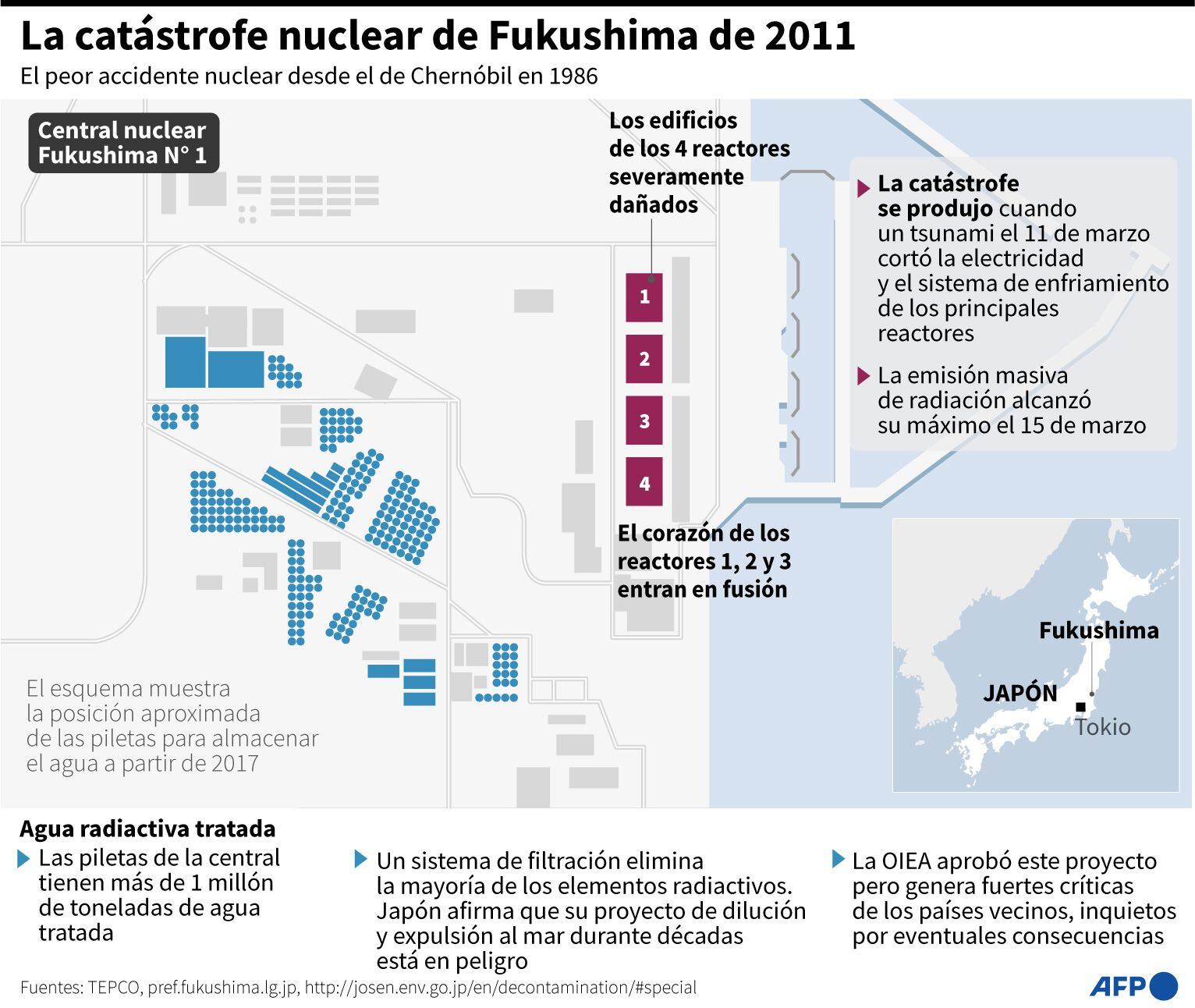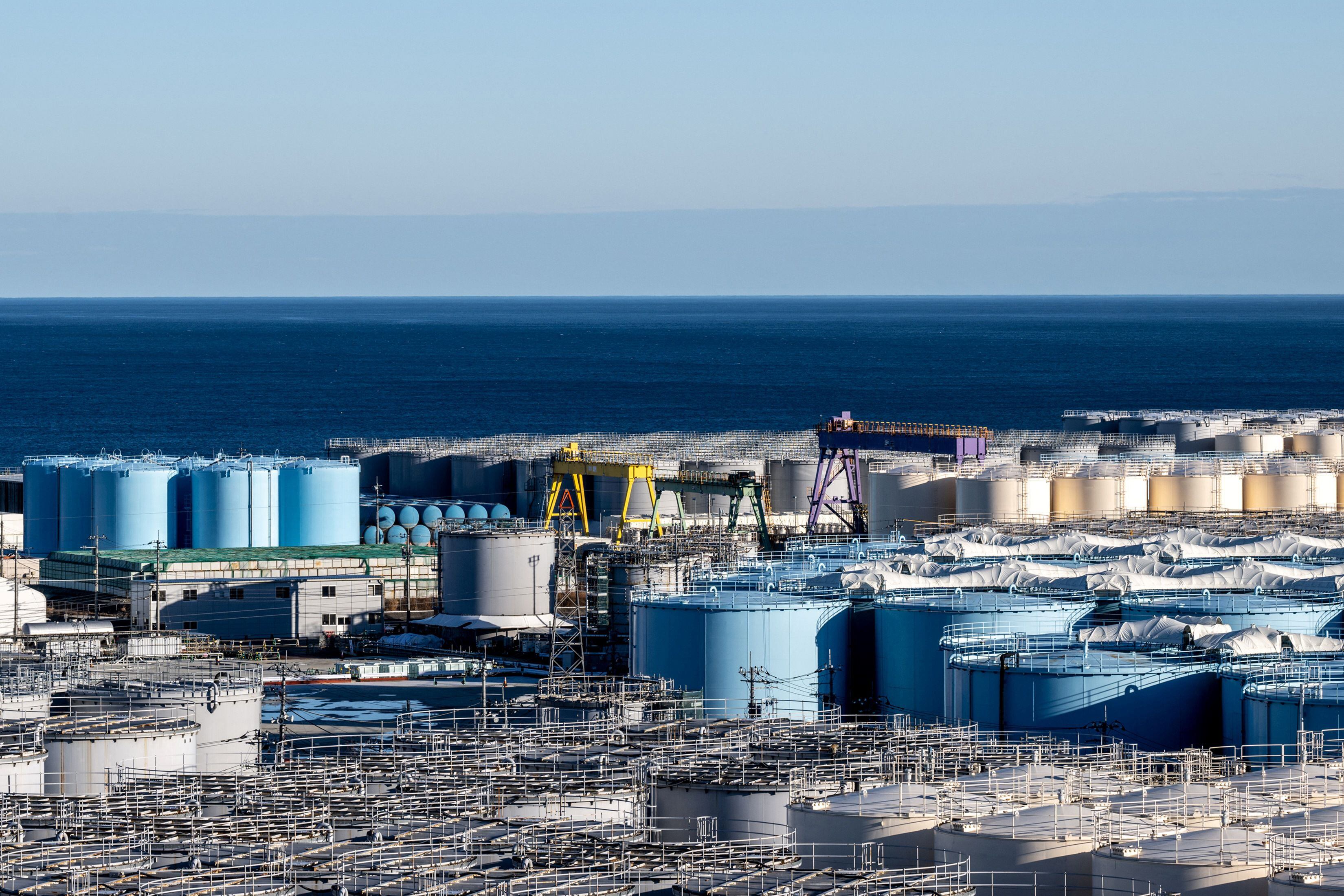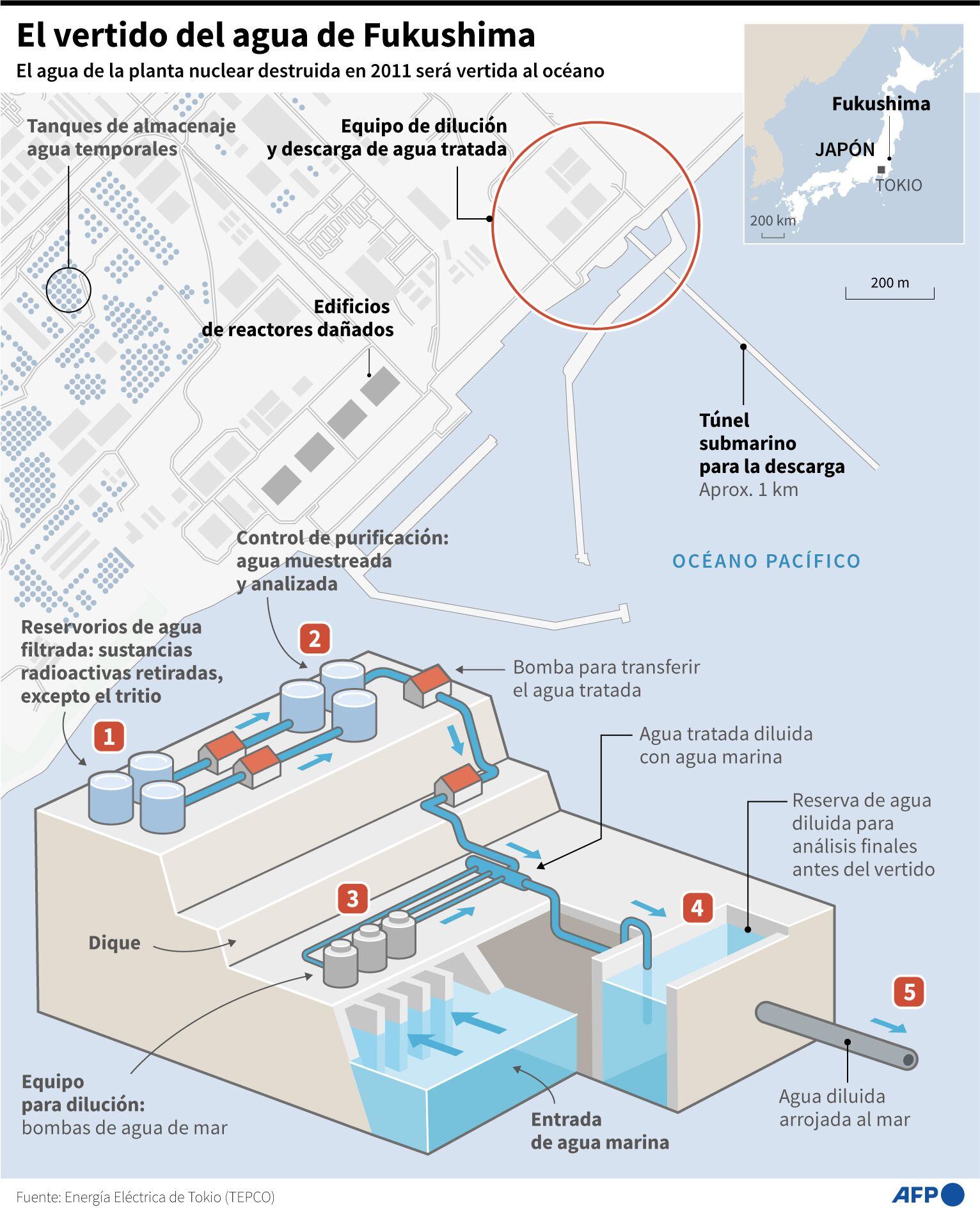Japan to begin discharging treated radioactive wastewater from the damaged nuclear power plant into the Pacific Ocean on Thursday Fukushima Daiichi. It will do so twelve years after the earthquake and tsunami that on March 11, 2011 killed thousands of people and rendered the plant useless.
There is concern among those who oppose the discharge of the water used to cool the nuclear power plant, as there is a radioactive isotope called tritium that could not be removed.
LOOK: The harsh conditions for Trump’s bail in Georgia (and what can happen if he violates them?)
This Wednesday Tokyo Electric Power (TEPCO), the operating company of the nuclear power plant, explained in a statement that it transferred about 1 m3 of this filtered water to remove radioactive substances, except for the tritiumand that he diluted this amount with 1,200 m3 of seawater.
The concentration of tritium of this sample will be measured to confirm that it is below the expected level of radioactivity of 1,500 becquerels (Bq) per liter, the maximum established for its discharge into the Pacific Ocean, he added TEPCO.
To further mitigate its effects, TEPCO is mixing the contaminated water with more clean water. This seeks to reduce the concentration of tritium and lower it to levels considered healthy.
According to the operator, the discharge will have about 190 becquerels of tritium per liter, while the limit established by the WHO for water consumption is 10,000 becquerels per liter.
It should be noted that the 2011 earthquake and tsunami destroyed the refrigeration systems of the nuclear power plant and caused the meltdown of three reactorss. Highly contaminated cooling water applied to the damaged reactors leaked into the basements of the buildings and mixed with the groundwater.

In these more than 10 years, contaminated water has been stored in tanks after undergoing exhaustive processing to eliminate most of the radioactive elements, but the containers and physical storage space in the facilities is reaching its limit, the EFE agency noted.
In this note we explain how polluted water has been treated, what is tritium, If there are risks to marine flora and fauna and what is the opinion of the IAEA:
TEPCO has said that it carried out an advanced process of treatment of the waters of the plant, called Advanced Liquid Processing System (ALPS)with which it was possible to eliminate 62 of the 64 elements radioactive.
This process failed to remove the tritium and carbon-14. The most worrying is the first.
Both are radioactive forms of hydrogen and carbon, respectively, and they are difficult to separate from water.
BBC Mundo explained that these substances are present in the natural environment, water, and even in humans, since they are formed in the Earth’s atmosphere and can enter the water cycle. Although they emit low levels of radiationcan pose a risk if consumed in large quantities.

The CNN network interviewed Julio Herrera, a researcher at the Institute of Nuclear Sciences of the UNAM, who confirmed that the tritium it is very difficult to separate from water.
He added that it has a half-life of 12 years, so that the tritium that was initially available has practically halved. “That’s him tritium that little by little it will be released into the sea,” he said.
“What is important is to confirm that all the heavier isotopes have been eliminated”Herrera said.
“The tritium will simply dilute with the seawater, which would mean that there is no health risk. Logically, this is something that has been studied before being able to make the decision ”, explained.
Regarding the danger to the flora and fauna of the Pacific Ocean, he said that it would not be so much from direct exposure to tritium but by ingestion, and that it accumulates in the fish and that eventually these animals cannot be consumed. “But according to the studies that have been done, there would not be a dangerous amount of radiation and that is why the decision has been made to dump it into the sea.“, accurate.
Japan plans to dump more than 1.3 million m3 of water from the fukushima in the next three decades.
TEPCO executive Junichi Matsumoto said that the release will begin with the least radioactive water to ensure safety. After the samples are analyzed in the final test, the water will be transported through a thin, black pipe to a coastal area where it will be diluted with hundreds of times its volume of seawater.
The diluted water will enter an underwater tunnel and will be released a few minutes later from a point 1 kilometer from the coast. The release will be gradual. and will continue for the aforementioned three decades until complete the decommissioning of the plant.
The AP agency explained that the final preparation for the first release began on Tuesday when only one ton of water was sent to be diluted with 1,200 tons of seawater, and the mixture would be kept in the main pool for two days for final sampling. On Thursday, a batch of 460 tons of contaminated water will be sent to the mixing pool for actual discharge to start the process.
TEPCO plans to release 31,200 tons of treated water by the end of March 2024, which would empty just 10 tanks out of a total of 1,000. Later the pace will pick up.

Japan and TEPCO they need to leave space for the dismantling of the plant and avoid accidental leaks of the tanks with radioactive water.
The International Atomic Energy Agency (IAEA) said in a report that the plan, if executed as designed, will have a negligible impact on the environment and human health.
The head of this UN agency, Rafael Grossi, visited the plant and said he was satisfied with the preparations.
The government of Japan says that the release of tritium in the sea is a routine practice of nuclear plants around the world and that the amount will be several times less than that of plants in China and South Korea.
Source: Elcomercio
I am Jack Morton and I work in 24 News Recorder. I mostly cover world news and I have also authored 24 news recorder. I find this work highly interesting and it allows me to keep up with current events happening around the world.

:quality(75)/cloudfront-us-east-1.images.arcpublishing.com/elcomercio/3G636O5SIJAADC22H7RH7LH2FY.webp)

:quality(75)/cloudfront-us-east-1.images.arcpublishing.com/elcomercio/JDBGCYBQMNDTBBWYIVTAHR7BK4.jpg)


:quality(75)/cloudfront-us-east-1.images.arcpublishing.com/elcomercio/S5INECSY7VAR5BABD6UKHI47MM.jpg)
